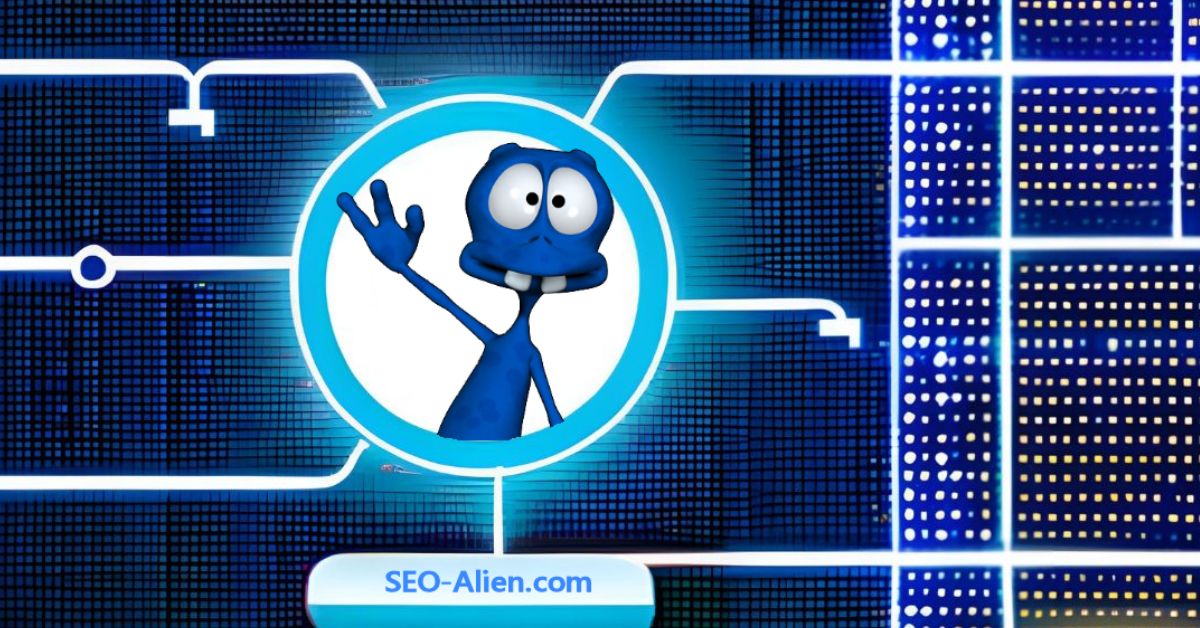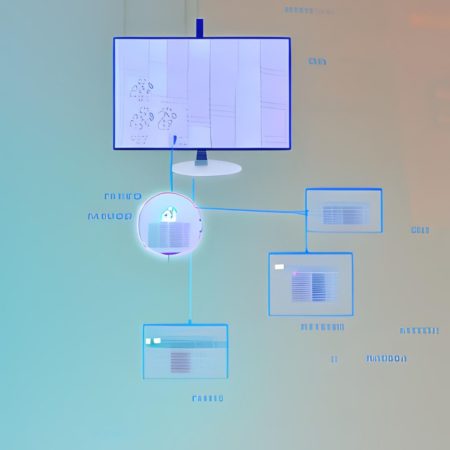In this article, we will take a look at the basics of AI and how it works, discuss some of the potential benefits and challenges of this technology. We will also answer your questions about how AI works and the potential benefits and challenges of this technology.
By the end of this article, you will have a better understanding of what AI is and how it is being used today.

The History of AI
The history of AI is a fascinating topic that spans from ancient myths and legends to modern scientific and technological achievements. According to some sources, the term "artificial intelligence" was coined by John McCarthy at a conference at Dartmouth College in 1956, where he and other researchers discussed the possibility of creating machines that could think and learn like humans. However, the idea of artificial beings with intelligence or consciousness goes back much further, to stories such as the bronze giant Talos in Greek mythology or the golem in Jewish folklore.
How does AI work?
AI works by using a process called machine learning. Machine learning is a type of artificial intelligence that allows computers to learn without being explicitly programmed. In the case of AI, machine learning is used to train the AI on a massive dataset of text and code. This dataset can include anything from news articles to scientific papers to code repositories. Once the AI is trained, it can then be used to answer questions by searching through the dataset for the most relevant information.
Here are the steps on how AI gets its answers:
- The AI is given a question.
- The AI searches through its dataset for the most relevant information.
- The AI uses the information it finds to generate an answer.
- The AI presents the answer to the user.
The AI's answer is not always perfect, but it is usually very good. The more data the AI is trained on, the better its answers will be. As AI continues to develop, it is likely that it will become even better at answering questions.
What are the different types of AI?
There are many different types of AI, each with its own strengths and weaknesses. Some of the most common types of AI include:
- Reinforcement learning: Reinforcement learning is a type of machine learning that allows computers to learn by trial and error. In reinforcement learning, the AI is given a goal and a set of rules. The AI then tries different actions to see which ones lead to the goal. The AI learns from its successes and failures, and over time it becomes better at achieving its goal.
- Supervised learning: Supervised learning is a type of machine learning that allows computers to learn from labeled data. In supervised learning, the AI is given a set of data that has already been labeled. The AI then uses this data to learn how to label new data.
- Unsupervised learning: Unsupervised learning is a type of machine learning that allows computers to learn from unlabeled data. In unsupervised learning, the AI is given a set of data that has not been labeled. The AI then uses this data to find patterns and relationships in the data.
What are the benefits of AI?
AI can also be used to improve our lives in many other ways, such as by automating tasks, making better decisions, and developing new products and services. Here are some specific examples of how AI can be used to solve some of the world's most pressing problems:
- Increased productivity: AI can be used to automate tasks that are currently done by humans. This can free up humans to focus on more creative and strategic work.
- Improved decision-making: AI can be used to make better decisions by analyzing large amounts of data. This can help businesses to make better investments, develop new products, and improve customer service.
- New products and services: AI can be used to develop new products and services that were not possible before. For example, AI can be used to create virtual assistants, self-driving cars, and personalized medicine.
- Climate change: AI can be used to develop new technologies to reduce greenhouse gas emissions and to adapt to the effects of climate change. For example, AI can be used to design more efficient solar panels and wind turbines, and to develop new crop varieties that are more resistant to drought and heat.
- Poverty: AI can be used to improve agricultural productivity, provide access to education and healthcare, and create jobs in developing countries. For example, AI can be used to develop new irrigation systems, to create personalized learning plans for students, and to automate tasks in factories.
- Disease: AI can be used to develop new drugs and treatments, to diagnose diseases more accurately, and to improve patient care. For example, AI can be used to analyze large datasets of medical data to identify patterns that can be used to develop new treatments.
What are the challenges of AI?
Artificial intelligence (AI) is rapidly developing and has the potential to revolutionize many aspects of our lives. However, AI also poses a number of challenges that need to be addressed. These challenges include:
- Job loss: As AI automates more tasks, it is possible that some jobs will be lost. This could lead to unemployment and social unrest.
- Bias: AI systems can be biased if they are trained on data that is biased. This could lead to discrimination against certain groups of people.
- Security: AI systems can be hacked and used for malicious purposes. This could lead to data breaches, financial losses, and even physical harm.
- Explainability: It can be difficult to explain how AI systems make decisions. This can make it difficult to trust AI systems and to hold them accountable for their decisions.
- Safety: AI systems can make mistakes, and these mistakes can have serious consequences. It is important to ensure that AI systems are safe and that they do not cause harm.
- Privacy: AI systems collect and use a lot of data. It is important to protect the privacy of this data and to ensure that it is used responsibly.
How AI is Being Used Today
Artificial intelligence (AI) is already here, and it's already having a major impact on our lives. In case you've missed it, here are some examples of how AI is being used today:

Self Driving Cars of the Future?
- Self-driving cars: Self-driving cars are already on the road, and they're only going to become more common in the years to come.
- Virtual assistants: Virtual assistants like Siri and Alexa are becoming increasingly popular, and they're using AI to understand our requests and provide us with information.
- Chatbots: Chatbots can simulate conversation with humans. They are similar to virtual assistants, but they are designed to perform specific tasks, such as answering questions or resolving issues. Chatbots are often used in customer service applications, where they can provide 24/7 support to customers.
- Recommendation engines: Recommendation engines are used by Netflix, Amazon, and other companies to recommend products and services that we might be interested in.
- Fraud detection: AI is used by banks and other financial institutions to detect fraud in financial transactions.
- Medical diagnosis: AI is being used to diagnose diseases more accurately, and it's even being used to develop new treatments.
The Big Question: Will AI take over the world and destroy humanity?
 Sure, it is possible that AI could take over the world and destroy humanity, but it is not likely. AI is a tool, and like any tool, it can be used for good or for evil. It is up to us to ensure that AI is used for good and not for evil.
Sure, it is possible that AI could take over the world and destroy humanity, but it is not likely. AI is a tool, and like any tool, it can be used for good or for evil. It is up to us to ensure that AI is used for good and not for evil.
There are a number of things we can do to ensure that AI is used for good.
- First, we need to make sure that AI is developed in a responsible manner. This means that we need to have clear guidelines for how AI should be developed and used.
- Second, we need to educate the public about AI. This will help people to understand the potential benefits and risks of AI, and it will help them to make informed decisions about how AI is used.
- Finally, we need to develop international agreements that govern the development and use of AI. This will help to ensure that AI is used for the benefit of all humanity, and not just for the benefit of a few.
It is important to remember that AI is still in its early stages of development. We are only just beginning to understand the potential of AI, and we are only just beginning to develop the tools and techniques that we need to use AI safely and responsibly. As AI continues to develop, it is important that we stay vigilant and that we continue to work to ensure that AI is used for good and not for evil.
Milestones of AI
Although artificial intelligence (AI) has its challenges, it has also had its share of successes. Here are a few of the most impressive milestones in the history of AI:
- In 1950, Alan Turing published his paper "Computing Machinery and Intelligence," which introduced the Turing Test, a test of a machine's ability to exhibit intelligent behavior equivalent to, or indistinguishable from, that of a human.
- In 1956, the Dartmouth Summer Research Project on Artificial Intelligence was held, which is considered to be the founding event of AI research.
- In 1965, Joseph Weizenbaum developed ELIZA, a computer program that can simulate human conversation.
- In 1972, John McCarthy, Marvin Minsky, and others found the American Association for Artificial Intelligence (AAAI).
- In 1980, Edward Feigenbaum and Pamela McCorduck published their book "The Fifth Generation," which predicts that AI will surpass human intelligence by the year 2000.
- In 1997, IBM's Deep Blue chess program defeated world champion Garry Kasparov.
- In 2011, Geoffrey Hinton, Yann LeCun, and Yoshua Bengio were awarded the Turing Award for their work on deep learning.
- In 2016, Google's AlphaGo program defeated world champion Go player Lee Sedol.
- In 2020, OpenAI's GPT-3 language model was released, which is capable of generating human-quality text.
These are just a few of the many milestones in the history of AI. As AI continues to develop, it is likely that we will see even more amazing advances in the years to come.
In closing
AI is a powerful technology with the potential to improve our lives in many ways. However, it is important to be aware of the potential challenges of AI and to take steps to mitigate them. With careful planning and development, AI can be used to create a better future for everyone.
Sources
- How Artificial Intelligence (AI) Helps in Decision Making 5/16/22- apksaver.com/how-artificial-intelligence-ai-helps-in-decision-making/
- How does machine learning work: 7/16/2022 – intelliconnect-tech.com/machine-learning-work/
- Conversation with Bing, 8/28/2017 – The History of Artificial Intelligence – Science in the News. – https://sitn.hms.harvard.edu/flash/2017/history-artificial-intelligence/
- History of artificial intelligence, 4/14/2023. – Wikipedia. https://en.wikipedia.org/wiki/History_of_artificial_intelligence
- History of artificial intelligence | Bosch Global, 1/30/2018. https://www.bosch.com/stories/history-of-artificial-intelligence/
- A Brief History of Artificial Intelligence | Live Science, 12/4/2016. https://www.livescience.com/49007-history-of-artificial-intelligence.html
About the Author:
The SEO-Alien is a project started in 2009 regarding all things online marketing. The site started out more of a diary of predictions, suggestions and references to things I frequently used for online marketing... before social media marketing was even an option.
I hope you find the information and tools presented here useful and something worth sharing with others.
If there is anything else about online marketing or any online advertising strategy you think would be helpful, please let me know.




.png)
